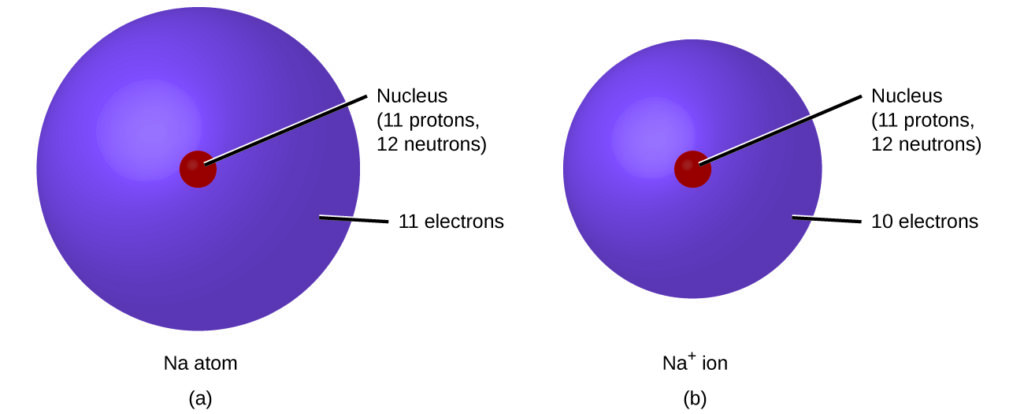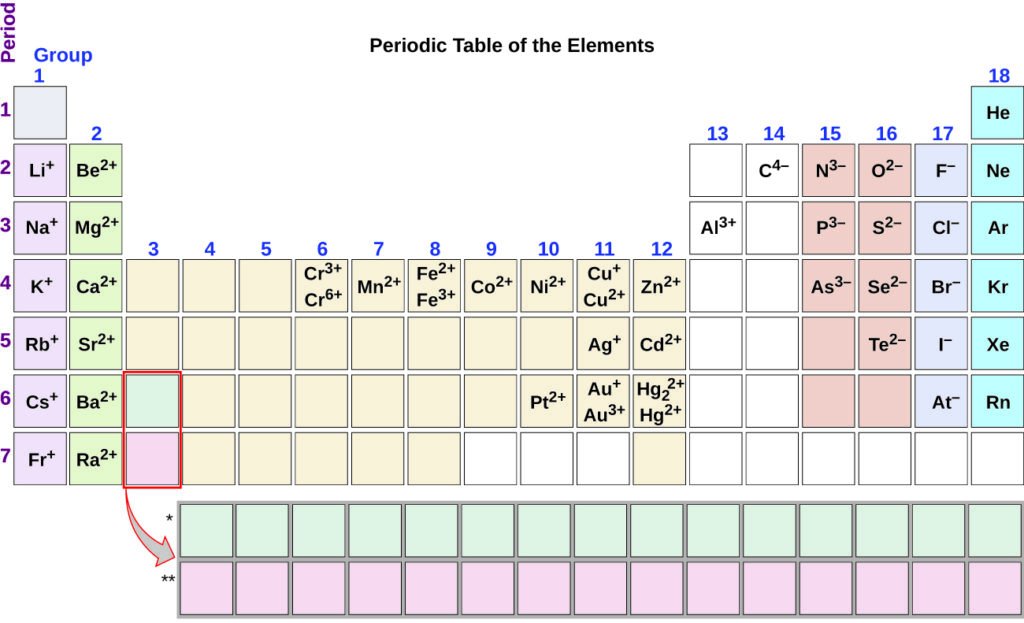An atom contains one single nucleus with its protons and neutrons within and electrons around the nucleus. A compound or molecule involves more than one atom to make a species.
In ordinary chemical reactions, the nucleus of each atom (and thus the identity of the element) remains unchanged. Electrons, however, can be either transferred (added or lost) between atoms (ionic bonding) or shared between atoms (covalent bonding). Ionic bonds are electrostatic forces of attraction, that is, the attractive forces experienced between objects of opposite electrical charge (in this case, cations and anions). Covalent bonds are the sharing of electrons through the attractive forces between the positively charged nuclei of the bonded atoms and one or more pairs of electrons that are located between the atoms. Compounds are classified as ionic or molecular (covalent) on the basis of the bonds present in them.
In ionic bonding, the atoms that gain or lose electron(s) form electrically charged particles called ions see below.

The Periodic table is useful in being able to help predict the most common ion for a species. Atoms will usually lose or gain electron(s) to be like the closest noble gas (group 18). To learn more about why these are the common ions please check out the page on electron configurations.

To learn more about ionic bonding please check out the page on ionic bonding.
Many compounds do not contain ions but instead consist of neutral atoms being involved in covalent bonding (sharing of electrons to create molecular compounds (covalent compounds).
Whereas ionic compounds are usually formed when a metal and a nonmetal combine, covalent compounds are usually formed by a combination of nonmetals. Thus, the periodic table can help us recognize many of the compounds that are covalent. We can use the positions of a compound’s elements in the periodic table to predict whether it is ionic or covalent at this point in our study of chemistry.
To learn more about covalent bonding please check out the page on covalent bonding.
In ionic bonding above we saw that we can have a monoatomic ion (ion consisting of one atom). We can also have polyatomic ions, ions that consist of more than one atom. In a polyatomic ion, we have both covalent and ionic bonding present. To learn more about polyatomic ions please check out the page on polyatomic ions.